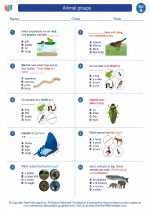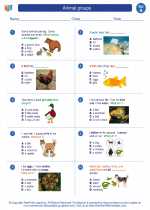Lipids
Lipids are a diverse group of organic molecules that are insoluble in water but soluble in nonpolar solvents such as ether and chloroform. They are important for storing energy, building cell membranes, and signaling within the body.
Types of Lipids
There are several types of lipids:
- Triglycerides: Composed of a glycerol molecule and three fatty acids. They are the main form of fat in the body and in the diet.
- Phospholipids: Composed of a glycerol molecule, two fatty acids, a phosphate group, and a polar molecule. They are the main components of cell membranes.
- Steroids: Composed of four fused carbon rings. They include hormones such as estrogen and testosterone, as well as cholesterol.
- Waxes: Esters of long-chain fatty acids and long-chain alcohols. They are used by plants and animals for protection and water conservation.
Functions of Lipids
Lipids have several important functions in the body:
- Energy storage: Triglycerides store energy in adipose tissue and provide fuel for the body.
- Structural role: Phospholipids are major components of cell membranes, providing structure and controlling the movement of substances in and out of the cell.
- Hormone production: Steroid hormones are derived from cholesterol and play important roles in regulating metabolism, immune function, and development.
- Insulation and protection: Adipose tissue provides insulation and protection for organs.
Study Guide
When studying lipids, it's important to understand the different types of lipids and their functions. Here are some key points to focus on:
- Identify the different types of lipids and their chemical structures.
- Understand the role of lipids in energy storage and metabolism.
- Explain the function of phospholipids in cell membranes and their importance for cell structure and function.
- Explore the role of steroid hormones derived from cholesterol in the body.
- Discuss the significance of lipids in insulation and protection of organs.
By mastering these key points, you'll have a solid understanding of lipids and their importance in biological systems.
.◂Science Worksheets and Study Guides First Grade. Animal groups
Study Guide Animal groups
Animal groups  Worksheet/Answer key
Worksheet/Answer key Animal groups
Animal groups  Worksheet/Answer key
Worksheet/Answer key Animal groups
Animal groups  Worksheet/Answer key
Worksheet/Answer key Animal groups
Animal groups  Vocabulary/Answer key
Vocabulary/Answer key Animal groups
Animal groups 

 Worksheet/Answer key
Worksheet/Answer key
 Worksheet/Answer key
Worksheet/Answer key
 Worksheet/Answer key
Worksheet/Answer key
 Vocabulary/Answer key
Vocabulary/Answer key

The resources above cover the following skills:
LIFE SCIENCE
From Molecules to Organisms: Structures and Processes
Design a solution to a human problem by using materials to imitate how plants and/or animals use their external parts to help them survive, grow, and meet their needs (e.g., outerwear imitating animal furs for insulation, gear mimicking tree bark or shells for protection).